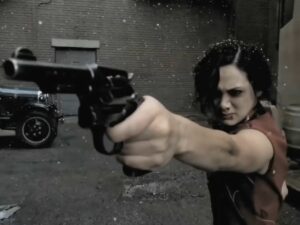With constant innovations in both technology and cinematic narratives, filmmaking on phones is the most obvious future for cinema. With something as accessible as an iPhone, much of the technical difficulties and barriers of breaking into filmmaking are removed. It allows an artist to shoot on the go, enabling him to capture the kind of moody visuals that would be otherwise impossible with traditional, bulkier equipment. This allows both beginners and seasoned professionals to brush up on their skills and experiment with their visual language without having to spend a lot of time or money. Acclaimed directors and cinematographers like Steven Soderbergh and Greg Fraiser hold the belief that making films on iPhones is the next logical step for indie-filmmaking. With that said, let us take a look at some of the best movies made on an iPhone.
1. Unsane (2018)

Steven Soderbergh’s 2018 horror/ psychological thriller film revolves around the story of Sawyer Valentini, a troubled woman who is confined to a mental asylum after being repeatedly stalked. Shot entirely on an iPhone 7 Plus, Soderbergh used the usual holy grails of phone filmmaking like gimbals and Beastgrip straps to mount the camera in close proximity to the actors. However, he also used unconventional methods such as wheelchairs to capture long tracking shots. Mounting cameras on the actors themselves also allowed him to get perspective shots that created an atmosphere of dread and claustrophobia.
Soderbergh has said of the film:
This movie needed a kind of physicality that a small capture device can provide. So, in my mind, it was a legitimate, creative choice – and I look at the movie now and I don’t think it would be as good if I had to shoot it in a conventional way.
2. Tangerine (2015)

Depicting the lives of trans women, especially trans sex workers, Tangerine was shot on three 5S iPhones. Sean Baker and Radium Cheng, who collaborated on the cinematography, wanted to bring out the reality of sex works on the streets of Los Angeles. In order to keep a sense of cinematic aestheticism, they used an anamorphic lens adapter. Baker says that they would have probably not made the film without the adapter, as it “really elevated the look.” Experimenting with three types of lenses, they created a look that imitated the 24 mm film. As a result, the film is full of beautifully framed, vibrant close ups that draw the viewer into the inner lives of the characters.
Thematically, Baker opines, it was very important for the project to have a sense of empathy. Shooting with phones allowed the filmmakers to go in a direction that allowed them to do that. Another tool that came in handy was the use of Steadicam rigs, which made capturing precarious shots more feasible and provided a stable field of action. Shot entirely on an iPhone, the movie is currently streaming on Netflix.
3. Détour (2016)

French director Michel Gondry shot this movie on iPhone 7 as part of a promotional campaign for Apple. Détour follows a family on their trip to a beach town who lose track of their daughter’s bicycle. In true indie fashion, the quirky plot is enhanced by the bright visuals. Employing a shallow depth of field, Gondry captures some really natural looking shots that make one feel like they are present in the car with the characters. That, in my opinion, is the true strength of cinematography. It does not employ too many flashy tricks and allows the story to be coherent with the medium.
The flexibility of shooting with an iPhone is also evident in the long takes and perspective shots that show off the scenery, as seen through the eyes of a child. Here is a heartwarming film that will take you right back to the times you spent gazing out the window on family road trips.
4. High Flying Bird (2019)

One of the best Hollywood movies of 2019, Soderbergh’s High Flying Bird too is shot entirely on the iPhone. This time on an iPhone 8. The film tells the fictionalized story of basketball player Andre Holland’s life. Holland plays Ray Burke, a struggling athlete. An iPhone’s ability to capture visuals in tight spaces really came in handy for this high adrenaline sports drama. Soderbergh has noted that many of the shots would not have been captured satisfactorily by traditional equipment, not without “anyone getting hurt.”
High Flying Bird also disposes with the stylistic embellishments of sports drama filmmaking, choosing to go with a naturally lit set and basic shots. To that end, Soderbergh uses a 12×12 inch LED lighting package. His skepticism for extraneous equipment is well evident in this Orson Welles quip:
I don’t want to wait on the tool, the tool should wait on me.
With High Flying Bird, he has truly perfected the no fuss style of filmmaking that he executes with a lovely realism, time and again.
5. Uneasy Lies the Mind (2014)
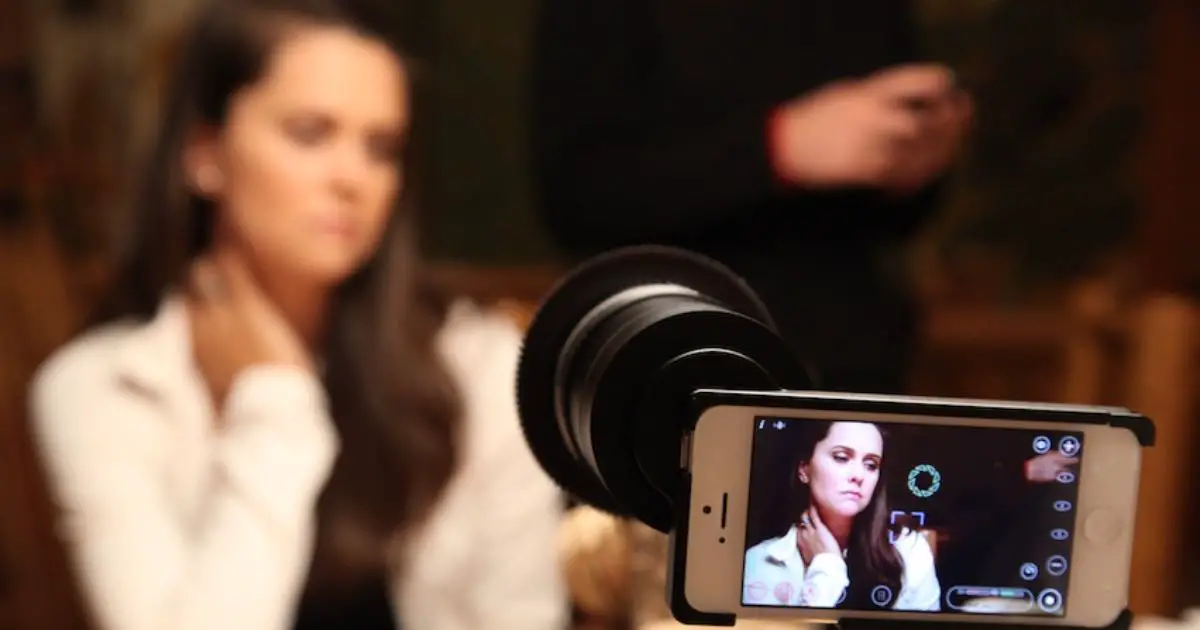
The limited scope and shallow depth of field provided by the iPhone camera lends an appropriate medium for this psychological thriller. The story revolves around Peter, whose seemingly perfect and put-together life with his spouse gradually unravels over a weekend getaway in a cabin. Shot on the iPhone 5 using the addition of cinema lenses, it was touted as the first feature film to be shot entirely on an iPhone. While the filmmakers briefly considered using 16 mm film to achieve a grainy, blurry look, they ultimately decided on using an iPhone for the same.
Qualities that would usually be considered flaws, such as a shallow depth of field, blurred and distorted images and the likes, were actually welcomed by collaborators Jonas Fisch, J’aime Spezzano, and Dillon Tucker, and cinematographer Ricky Fosheim. In fact, Fosheim deliberately retained fingerprints, dirt and grime that would accumulate on the lenses to impart a sense of gritty dream-vision aesthetic to the film.
6. 9 Rides (2016)
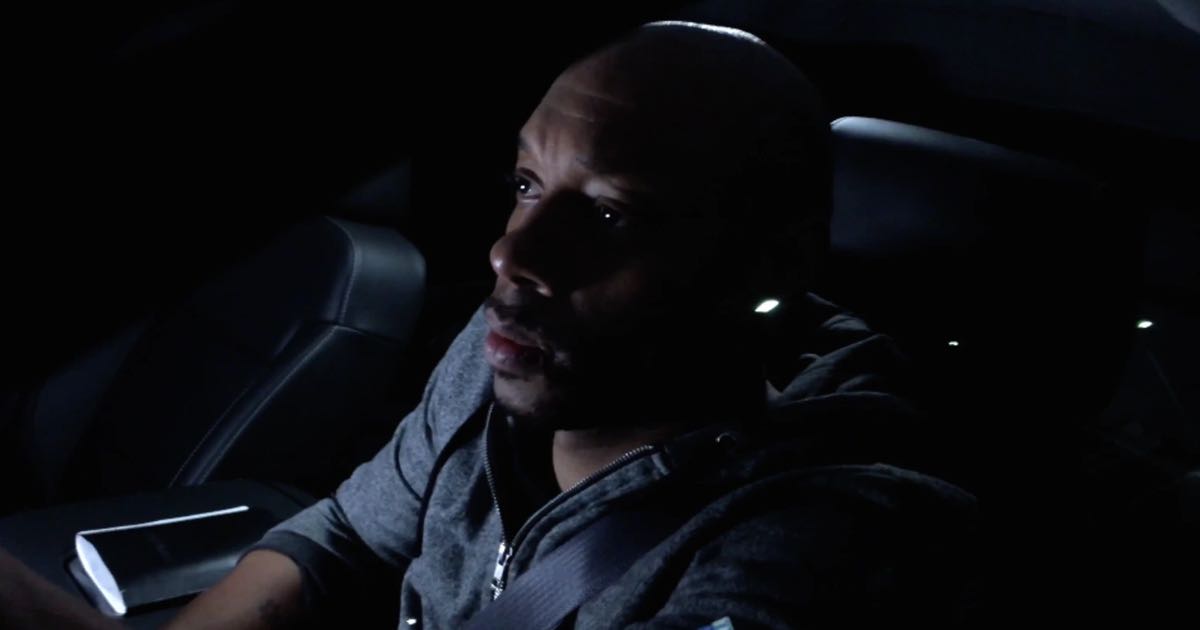
Directed by Matthew E. Cherry, 9 Rides depicts the story of a cab driver who finds out that his fiancé is cheating on him. His next nine rides help him come to terms with this revelation. Shot on an iPhone 5s, 9 Rides shares some similarities with another film on our list, Tangerine. Both depict the nightscape of L.A through an ethereal look buzzing with possibility. Yet, the closeups and distorted shots of each put the viewer in a state of unrest, anticipating big shifts in each scene to come.
Yet, 9 Rides also uses its limited scope and set (the space of a taxi cab) to completely immerse viewers in its world. The compressed look and feel of the film definitely lend it some emotional heft. It is a testament to the ability of Cherry that a film that was put together in the middle of another project, comes off as so refined and fully formed on its own. The film is streaming on Amazon Prime.
7. Night Fishing (2011)

Directed by brothers Park Chan-wook and Park Chan-Kyong, and shot on the iPhone 4s, Night Fishing tells the story of a solitary man who encounters a mysterious creature while fishing alone. Drawing inspiration from the surrealist, haunting visions of Korean spirit world mythology, the film makes use of the blurry, grainy texture of early noirs to impart an otherworldliness to its look. Originally shot as part of the Korean campaign for the rollout of the iPhone 4s, one may view the film as a marketing gimmick more than avant-garde art. Yet, it adapts the story to the inherent limitations of the equipment.
The distorted shots are bestowed with a dark vignette around the edges and the limited filming scope and time is used to focus on one of the two characters at any given time. The film may have a slightly derivative look, as far as indie projects go. Regardless, it remains one of the earliest precursors of what results can be achieved in filmmaking by using a phone.
8. Snow Steam Iron (2017)
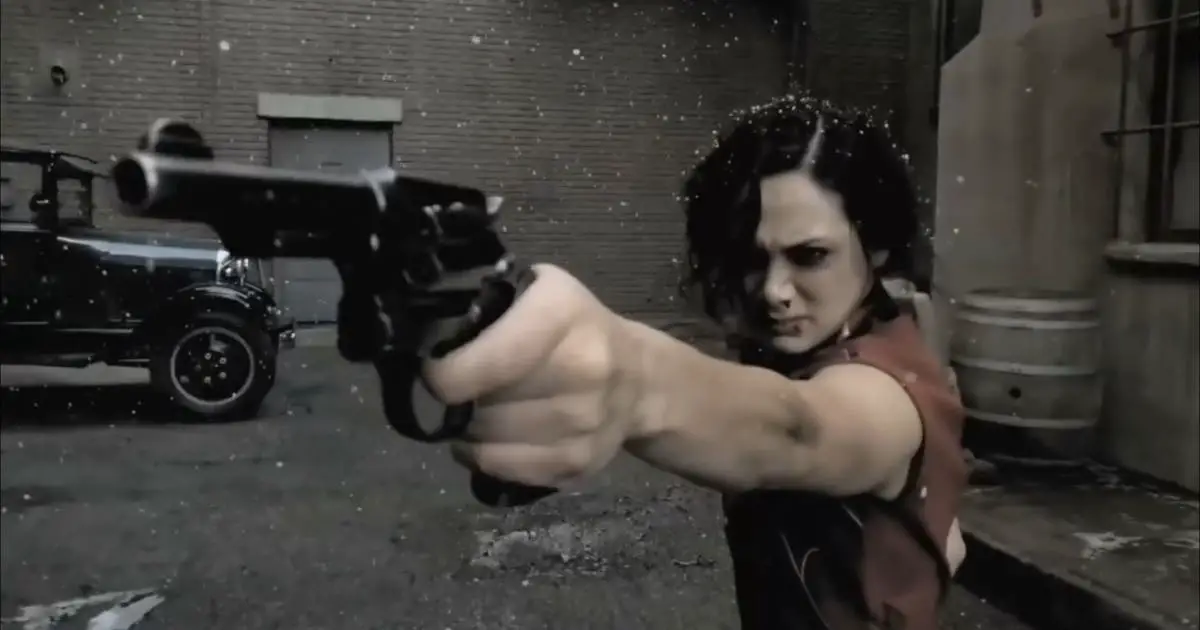
It’s almost out of character for a filmmaker like Zack Snyder — who delights in creating epic, grandiose and brooding visuals on the big screen — to shoot a film using an iPhone. Yet, that is exactly what he does in Snow Steam Iron. Staples from his previous work, like sprawling sets, an out-of-time quality, grand costumes and a noir-like preoccupation with the gray and dubious still persists. It’s obvious that this is quite a bit of production design for a film that is only four minutes long.
Yet, the use of the iPhone as the only equipment is the only thing that stands out. Snyder may have come up as a director whose films are VFX and set design masterpieces, but he wanted to strike out and challenge himself to work without these crutches. The result was this film that retains the cinematic magic of his work, yet uses humble means to get there. Synder used the holy grail of iPhone filmmaking, Filmic Pro, quite a bit for this one. It is evident in the editing and pacing of the scenes, which almost run like an abstract sequence of emotive imagery, designed to communicate an emotional reaction instead of a material one.
9. Romance in NYC (2014)
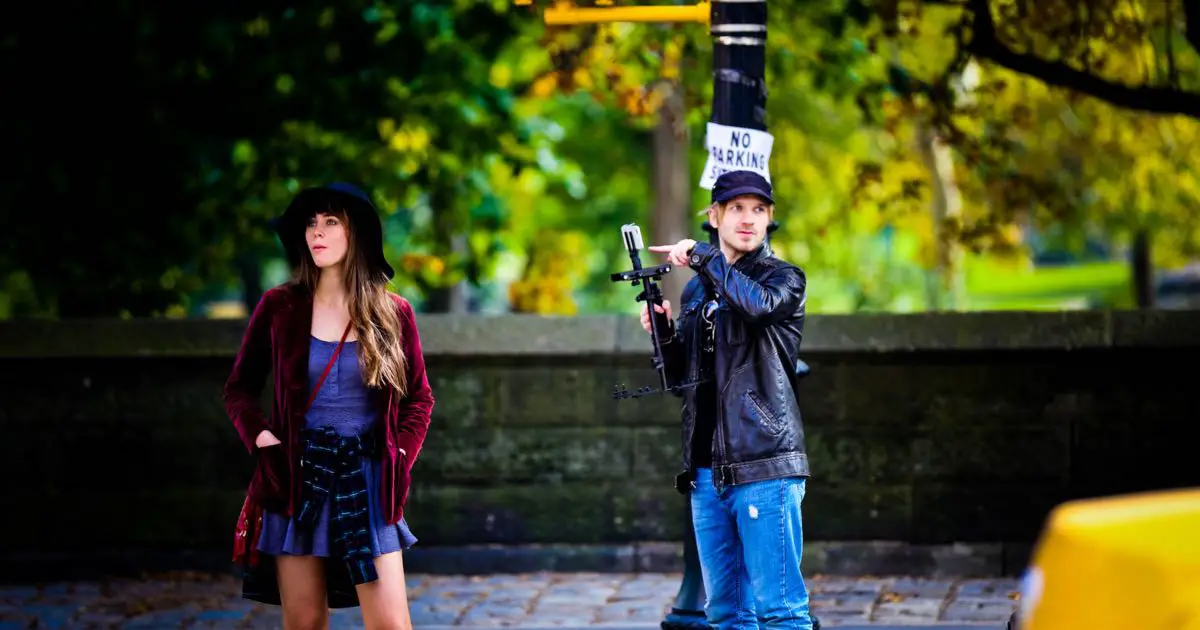
Shot by Emmy winning director Tristan Pope, Romance in NYC is a charming film about…. well, love and romance in New York City! Filmed from a first-person perspective, the film depicts the everyday moments of a relationship between two partners in the city. Shot from the point of view of the boyfriend, the filming process was adapted in a manner that his presence in the frame was always maintained. One way around this was the director holding and positioning the camera strapped to him, so that the actor’s hands were free to be in frame. Thus, through shots of him helping his partner put on a jacket, or similar actions, one gets the sense of his presence and their shared domestic life.
The key was to not overuse the POV, letting it in for key shots and gradually filling out the frame with wider shots and mediums that give us a look at their surroundings. This also helped alleviate the sense of visual claustrophobia that so often accompanies filmmaking on an iPhone.
10. I Play With the Phrase Each Other (2013)
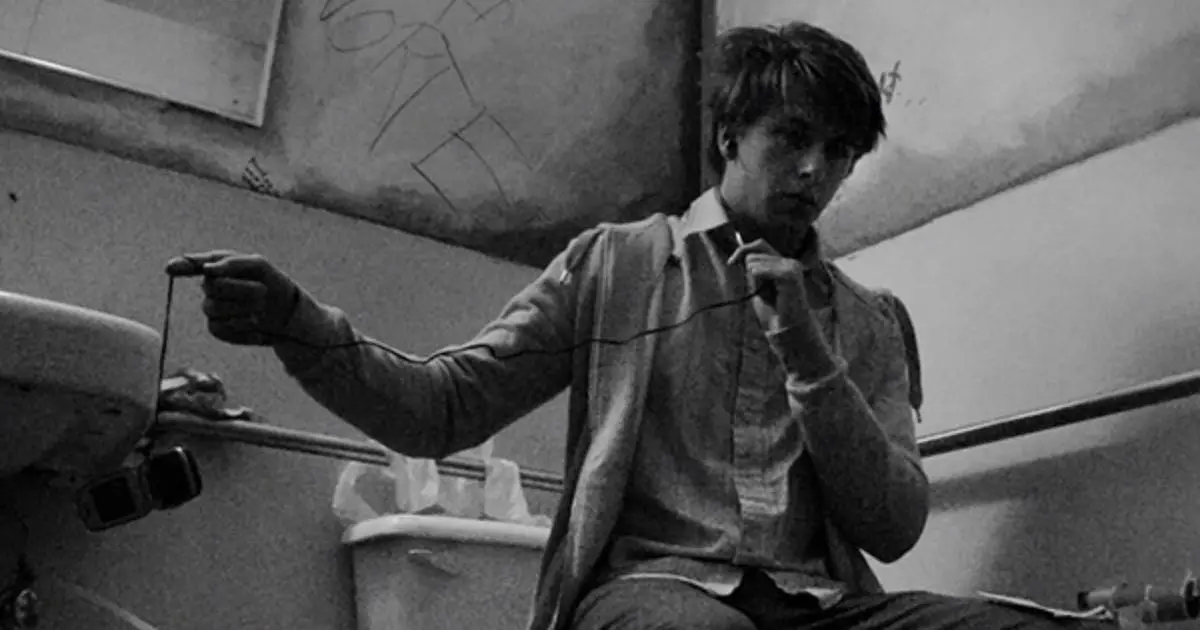
This film from director Jay Alvarez paints a wonderfully nuanced portrait of urban loneliness and mid-life despair. The story revolves around Jake, who is persuaded by his friend Sean to give up the safety of his hometown to come live in Chicago. The film is composed almost entirely of phone calls that give us a look at the troubled relationships that Jake has with his family and friends. Shot by Ray Callaway, the film heavily leans on close ups. It functions to draw in the audience into the bleak inner lives of its characters.
However, they also serve a bigger purpose. In showing us as little as possible of their surroundings, the cinematography isolates us and the characters with their context. These kinds of economical stylistic choices create a tense, noir-ish atmosphere of dread and anticipation that helps to compensate for the rather uni-dimensional and somewhat flat storytelling.
Conclusion
While there will always be die-hard cinephiles and filmmakers who won’t stop extolling the virtues of shooting films with traditional equipment, it is clear that the iPhone is the preferred tool for a new generation of rising, risk-taking artists who don’t mind learning on the job. Capturing intense, moody visuals on the go, and experimenting with newer styles of storytelling is on the rise. Amateurs may find themselves at an advantage here, as such methods allow them the chance to learn the tricks of the trade from the ground up, using the most basic of equipment. This holds especially true in the context of content saturation on the Internet. Today, creating new and bolder content is the only way to stay relevant. Love it or hate it, filmmaking on iPhones is issuing a new challenge, and it is clearly here to stay.
Which ones of these did you like the most? Let us know in the comments below!

